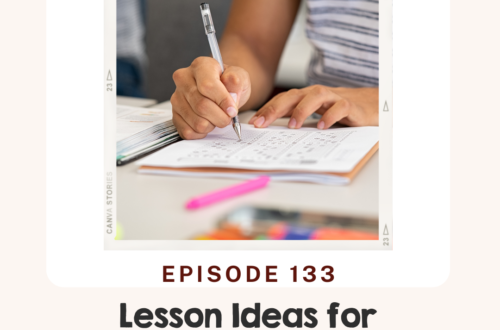
Why You Need Language Goals While Teaching Remotely
Welcome back educators and superheroes! Before we jump into today’s topic, I would like you to reflect on your wins for the week. This past week has been a rollercoaster with virtual learning and I like to think of some of the highlights of the week. A personal win for me was successfully switching over to Teams. This week I will actually be teaching my first lesson on Teams.
Every week I want to highlight a teacher’s win. A win can be big or small. I want you to celebrate your wins, and we want to celebrate with you! If you have a win you want to share email me at millie@myadventuresinesl.com
During this transition of teaching my ELLs remotely, I noticed that I struggled to keep a classroom structure for my students. Having structure in a classroom can help the students feel safe, and I wanted that same feeling of safety in the remote learning process. Having language goals everyday was a part of my classroom structure, and since I am not in a classroom it has been a challenge to have those goals daily.
Everyday at the beginning of class I have language goals that help the students reflect on their learning. Having language goals drives my classroom instruction and without them I have been feeling confused and frustrated. Ever since we switched to remote learning, I have struggled with how I implement these language goals with my ELLs. I was so used to having them up on chart paper or the board. Then have the students talk about the goals. Well I am no longer in the classroom and these tools were not immediately at my disposal.
This led me to think about what tools I do have at my disposal. I didn’t want to give up on providing my students daily language objectives so I brainstormed what I had available. I also kept in mind what tools can the students access at home.
First, I knew the students had access to Youtube. I mean that’s all they talk about in middle school. I decided to do my virtual lessons through Zoom (now Teams) and upload it to Youtube. When I did my lessons I included language goals in the slides. The students then rated themselves and reflected in the comments on either the live lesson or on Youtube. I also used Flipgrid to share language goals with the students. This helped guide my online instruction and let the students know what their expectations were from the lessons.
Going forward in your remote learning I want to encourage you to include language goals.
This helps your students know and understand the language expectations. Language goals also guide your instruction with the four language domains (listening, reading, speaking, and writing).
You can include your language objectives in the following ways:
- Youtube videos
- Flipgrid videos
- Record an audio file for your language objective and send it to your students to accompany remote learning worksheets
- Embed language goals in your virtual lessons just as if you did in the classroom
Now it’s time for you to take action:
- Decide on how you are going to implement language goals for your ELLs while distant learning.
- Decide on which medium you are going to use to make the language goals accessible to the students.
- Implement the language goals in each lesson.
If you need help writing a language objective, I have you COVERED! I have a free Language Objective Guide that will walk you through step-by-step on how to write a language objective. I have also included a video below that will help you in the process.
I would love to know how you are using language goals in your current lessons. Share in the comments how you are using language goals while you are remote teaching.





2 Comments
Lisa Friscia
Hi the language objective guide wont open can you please email it to me? thank you!!
Millie
Hey Lisa!
I sent you a copy to your email.